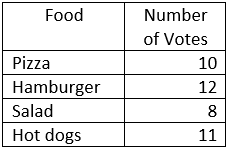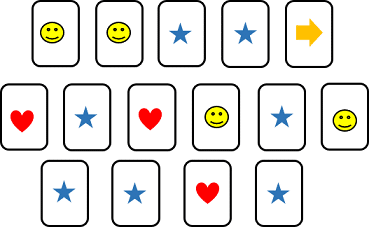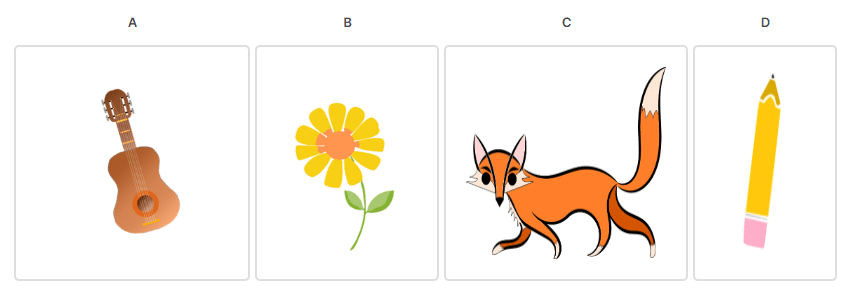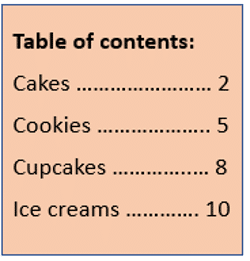MAP Kindergarten Test: Free Practice, Scores & Preparation Tips
Welcome to your complete preparation guide for the NWEA MAP test for kindergarten.
On this page, you’ll find everything you need to maximize your child’s score potential, including:
- In-depth overview with important things to know
- Free practice test
- Scores interpretation
- Recommendations for accurate practice tests
- And more…
So if you’re serious about helping your child prepare and score high, you’ll love this guide.
Let’s get started!
What’s on This Page
What Is the MAP Growth Test for Kindergarten?
The MAP Growth Test for Kindergarten is an assessment designed to measure your child’s academic progress and growth throughout the school year. “MAP” stands for Measures of Academic Progress, and it’s a tool used by educators to gain insights into your child’s learning journey.
Understanding the Purpose
The primary purpose of the MAP test is to provide teachers with valuable information about your child’s strengths and areas that may need additional attention. Unlike traditional tests, MAP tests are adaptive, meaning they adjust to your child’s skill level. This adaptability allows for a personalized assessment experience tailored to your child’s unique abilities.
How Does It Work
During MAP kindergarten tests, your child will be presented with two sections (math and reading), each has about 43 questions. The difficulty of these questions will change based on their responses. If your child answers a question correctly, the next one may be slightly more challenging. Conversely, an incorrect answer may lead to a slightly easier question. This dynamic process ensures a more accurate measurement of your child’s current academic level.
Subjects Covered
The MAP Growth Test for Kindergarten typically assesses skills in mathematics and reading. For math, it covers counting, basic operations, and problem-solving. In reading, the focus is on letter recognition, phonics, and comprehension. The goal is to provide a comprehensive overview of your child’s abilities in these key areas.
Take a Free MAP Kindergarten Practice Test
Math Sample Questions
Sample Question #1

What is the correct way to continue the pattern above?

Correct Answer & Explanation:
The correct answer is B.
This pattern has a rule: the first circle is orange, the second is orange, the third is green, and then this pattern repeats (orange, orange, green, orange, orange, green…)
The last circle in the pattern above is green, so the next three circles must be: first orange, then orange again, and then green, like in answer B.
Sample Question #2
Look at the chart:

How many people voted for hot dogs as their favorite food?
A. 8
B. 10
C. 11
D. 12
Correct Answer & Explanation:
The correct answer is C.
To find the correct answer, we need to look at the row of the “hot dogs” and see what number of votes it received.
The number is 11. So, the correct answer is C.
Sample Question #3
Jim has a set of cards which is presented below:
He wants to choose a card without looking.

Which of the cards is Jim least likely to choose?
A. The smiley face
B. The arrow
C. The heart
D. The star
Correct Answer & Explanation:
The correct answer is B.
The card that is least likely to be chosen is the card that appears the fewest number of times. To decide which card is least likely to be chosen by Jim, count the different cards:
There are four cards with a smiley face.
There is one card with an arrow.
There are three cards with a heart.
There are seven cards with a star.
You can see that the type of card that appears the fewest number of times is the arrow. Thus, Jim is least likely to choose a card with an arrow.
Therefore, answer B is the correct answer.
Reading Sample Questions
Sample Question #1
Which word ends with the sound of the letter “X”?

Correct Answer & Explanation:
The correct answer is C.
The letter X makes the sound /ks/.
The picture in answer C is a fox, which ends with the sound /ks/.
Sample Question #2
Look at the following table of contents:

Which page has instructions for baking cookies?
A. 2
B. 5
C. 8
D. 10
Correct Answer & Explanation:
The correct answer is B.
A table of contents is a page that appears at the beginning of a book, and contains a list of the book’s chapters, and the page where each chapter starts.
To know which page has instructions for baking cookies, look for the word “cookies” in the table of contents.
Then, look at the number that appears on the right of the word, it tells the page of this chapter.
The number on the right of the word “cookies” is 5, so page 5 has the instructions for baking cookies.
Sample Question #3
Which word starts with the sound of the letters p and h together (ph)?

Correct Answer & Explanation:
The correct answer is A.
When the letters p and h come together, they make the sound of the letter “f”.
The word “phone” starts with the sound of the letters “p” and “h” together.
Answers B and D are incorrect because the words “parrot” and “plane” start with the sound of the letter “p” by itself.
Answer C is incorrect because the word “house” starts with the sound of the letter “h” by itself.
Get More Practice Resources to Help Your Child Score High
Given the adaptive nature of the MAP test, continuous practice is key to your child’s success. The more exposure they have to various question types, the more confident and prepared they will be on test day.
The best method to achieve that is by taking accurate MAP practice tests that cover the various question types and difficulty levels seen on the exam.
Several online platforms offer practice questions that mimic the format of the MAP test. However, we found that TestPrep-Online offers the most comprehensive and accurate option, with 250+ practice questions (recorded and text-based) and detailed explanations.
Get 250+ MAP Kindergarten practice questions to maximize your child’s score potential.
Understand What the MAP Kindergarten Scores Mean
RIT Scores and the RIT Scale
MAP scores are reported in RIT scores (Rasch UnIT), which is a measurement of a student’s academic growth. The RIT Scale is a scale used to track this growth over time. It’s important to understand that the RIT Scale is continuous across grade levels, providing a consistent measure of a student’s academic performance from one year to the next.
Understanding Percentiles
Percentiles are a way to interpret your child’s MAP scores in comparison to their peers. When we say a RIT score is at the 50th percentile, it means your child’s performance is right in the middle—half of the students scored lower, and half scored higher. For example, a RIT score at the 75th percentile indicates that your child performed as well as or better than 75% of students in the same grade.
What is a Gifted MAP Score for Kindergarten?
A gifted MAP score for Kindergarten can vary, but generally, a RIT score above the 95th percentile is considered indicative of giftedness. This means your child is performing at a level significantly higher than their peers. Identifying giftedness early on can help in tailoring educational experiences to meet your child’s advanced learning needs.
What is a Good MAP Score for Kindergarten?
A good MAP score for Kindergarten is typically one that reflects age-appropriate academic growth. While specific numbers may vary, a RIT score around the 50th percentile is considered average, indicating that your child is performing at an expected level for their age group. Scores above the 50th percentile suggest above-average performance, while scores below indicate areas for potential improvement.
Interpreting the Scores
- Above Average: RIT scores above the 50th percentile show that your child is performing well and meeting or exceeding grade-level expectations.
- Average: A RIT score around the 50th percentile is considered average, indicating your child is on track for their grade.
- Below Average: Scores below the 50th percentile might suggest areas where your child may need additional support or practice.
What You Can Do Once You Receive Your Child’s Scores
Celebrate Growth: Regardless of the specific score, celebrate your child’s progress and growth. Every child learns at their own pace.
Communicate with Teachers: Reach out to your child’s teacher to discuss the scores in detail. Understand where your child excels and areas where they may need extra support.
Set Realistic Expectations: Remember that MAP scores are just one measure of your child’s academic journey. It’s essential to consider various factors when assessing their overall development.
Overview of the MAP Kindergarten Math Section
This segment aims to assess your child’s mathematical abilities through approximately 43 questions covering a range of topics:
| Skills Tested | Question Types |
|---|---|
| Computation and Problem Solving | – Calculations with basic operations – Applying properties of computation to solve word problems (Example: Solve the problem: If you have 3 apples and eat 1, how many apples are left?) |
| Number Sense | – Identifying, counting, comparing, and ordering numbers (Example: Which group has more flowers: 5 or 8?) |
| Measurement | – Understanding concepts of length, area, time, temperature, etc. (Example: Point to the longest object in the set.) |
| Geometry | – Identifying 2-D and 3-D figures, symmetry, and congruence (Example: Match the everyday object to the correct geometric shape.) |
| Statistics and Probability | – Interpreting simple graphs, determining the likelihood of events (Example: Look at the graph. Which animal is the most common?) |
| Algebra | – Applying algebraic concepts such as equivalence and patterns (Example: Identify the pattern in the sequence of shapes.) |
For 5-year-olds, hands-on activities with physical elements like counting objects or comparing shapes to everyday items can significantly aid understanding.
To learn more about this section and take additional sample questions, visit our MAP kindergarten math test guide.
Overview of the MAP Kindergarten Reading Section
The MAP Kindergarten Reading Section, consisting of around 43 questions, aims to evaluate various aspects of early literacy:
| Skills Tested | Question Types |
|---|---|
| Phonology and Phonics | – Distinguishing between different sounds – Understanding vowels, consonants, syllables, and rhyming words (Example: Which word rhymes with ‘cat’?) |
| Concepts of Print | – Understanding the hierarchy between letters, words, and sentences – Recognizing book characteristics and structure (Example: Point to the first word in the sentence.) |
| Word Structure and Meaning | – Applying prefixes and affixes – Inferring word meanings from context – Recognizing synonyms and antonyms (Example: What is the opposite of ‘big’?) |
| Comprehension | – Listening and reading comprehension – Identifying story characteristics like setting and characters (Example: Where does the story take place?) |
| Writing | – Correct usage of capitalization, punctuation, spelling, verb tenses – Distinguishing between different parts of speech (Example: Choose the correctly spelled word.) |
Remember, questions are recorded, and your child can listen to them again if needed. Practice listening comprehension by reading stories and asking questions to support their preparation.
To learn more about the Reading section and take additional sample questions, visit our MAP kindergarten Reading test guide.
9 Actionable Tips to Help Your Child Prepare
Here are nine actionable tips, each accompanied by detailed examples to guide you in supporting your child’s preparation:
Before we delve into the examples, it’s important to create a positive and encouraging learning environment. Keep in mind that young children learn best through play and exploration, so make the preparation process enjoyable and stress-free.
Create a Daily Reading Routine
Reading is a fundamental skill that forms the basis of many test questions. Establishing a daily reading routine not only enhances your child’s literacy but also prepares them for questions related to comprehension and vocabulary.
Examples:
- Engage in a bedtime story ritual. Choose books with vibrant illustrations and discuss the characters and plot to encourage comprehension.
- Turn everyday situations into learning opportunities by pointing out words on food labels or street signs.
- Extend the reading experience by asking questions about the story after finishing. This promotes critical thinking and verbal expression.
Incorporate Math in Daily Activities
Infusing math into everyday activities helps your child develop a strong foundation in numerical concepts, which is crucial for the math section of the MAP test.
Example 1: Counting is a simple yet effective exercise. Count toys, snacks, or steps to reinforce numerical understanding.
Example 2: Use household items for basic addition. For instance, ask your child to add two apples to three apples and count the total.
Example 3: Introduce geometry by identifying shapes in your environment. Point out rectangles (like windows) and circles (like plates).
Play Educational Games
Educational games make learning fun and interactive. Incorporate games that align with the skills tested in the MAP Kindergarten test.
Examples:
- Board games with counting or matching components enhance numerical and strategic thinking.
- Flashcards are a versatile tool for quick and engaging learning. Use them for letter recognition, simple math problems, or sight words.
- Explore educational apps or online games that focus on letters, numbers, and basic concepts relevant to the test.
Encourage Writing Practice
Developing writing skills is a vital aspect of the MAP test. Encourage your child to express themselves through drawing and writing.
Examples:
- Provide crayons and paper for creative drawing. Allow your child to freely express themselves through art.
- Practice writing letters and simple words. Use large, dotted letters as a guide for proper formation.
- Play writing games like “Hangman” with age-appropriate words to make spelling and word recognition enjoyable.
Explore the Library Together
Visiting the library is a fantastic way to instill a love for reading and expose your child to a variety of books.
Examples:
- Attend library storytime sessions. The interactive and communal aspect enhances social and listening skills.
- Let your child choose books based on their interests, promoting autonomy and enthusiasm for reading.
- After reading a book, discuss the story with your child. Ask questions about the characters, plot, and their favorite parts.
Use Educational Apps
Leveraging technology through educational apps can be a valuable supplement to traditional learning methods.
Examples:
- Explore interactive math and reading apps tailored to your child’s age and skill level.
- Choose apps that specifically align with the skills tested in the MAP Kindergarten test to ensure targeted preparation.
- Set a designated time each day for educational screen time, providing a structured and consistent learning experience.
Create a Quiet Study Space
Establishing a dedicated study space fosters focus and concentration, essential for effective learning.
Examples:
- Designate a special study corner with comfortable seating, encouraging your child to associate the space with positive learning experiences.
- Minimize distractions in the study area by keeping it free of toys or excessive noise.
- Ensure good lighting for reading and writing, creating an inviting atmosphere for study sessions.
Celebrate Achievements
Recognizing and celebrating your child’s efforts and achievements reinforces a positive attitude toward learning.
Examples:
- Create a reward system for completed tasks, motivating your child to actively engage in their preparation.
- Display your child’s artwork or achievements prominently, boosting their confidence and sense of accomplishment.
- Offer verbal praise for effort and progress regularly, emphasizing the importance of the learning process itself.
Talk About School and Learning
Open communication about school and learning experiences creates a supportive and engaging environment for your child.
Examples:
- Ask open-ended questions about your child’s day, encouraging them to share their thoughts and experiences.
- Share positive stories about your own learning experiences, making learning relatable and enjoyable.
- Foster a positive attitude towards learning by highlighting the fun aspects of it, such as discovering new things and solving puzzles together.
Implementing these tips with patience and enthusiasm will not only enhance your child’s preparation for the MAP Kindergarten test but also contribute to a lifelong love for learning.
Conclusion
This comprehensive guide equips you with the essential information and resources needed to support your child’s success in the MAP Kindergarten test. From understanding the purpose and adaptive nature of the test to interpreting scores and exploring effective preparation strategies, you now have a roadmap for a positive and fruitful preparation journey.
Remember to celebrate your child’s growth, communicate with teachers, and create a nurturing learning environment. To further enhance your child’s readiness, take advantage of practice resources, including accurate MAP practice tests and engaging activities. Your commitment to these tips will not only prepare your child for the test but also foster a love for learning that extends beyond the assessment.
